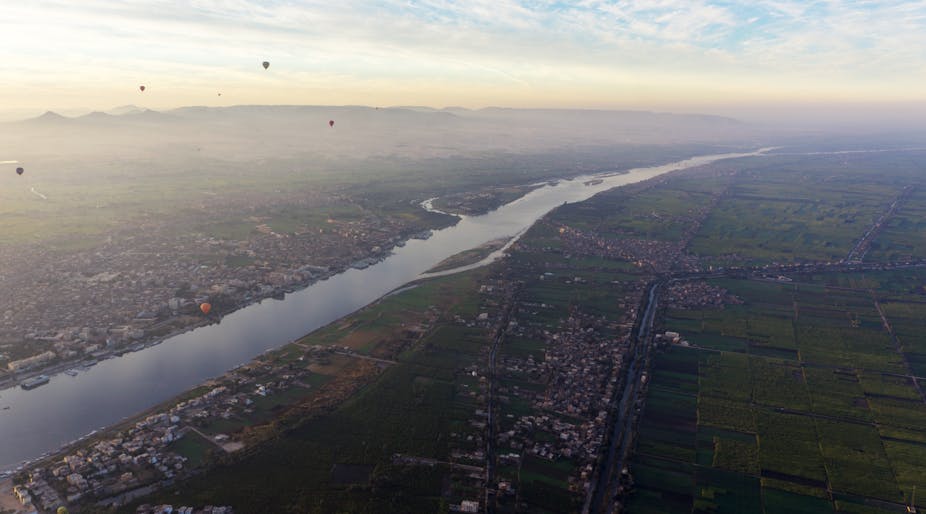The World Economic Forum has ranked water crises as the greatest global risk to economies, environments and societies in the next decade, posing even greater threats than climate change.
One of the major scenes of a potential water crisis and conflict is the Nile River, the longest in the world. It flows through 11 countries - known as the Nile Basin countries – and the catchment area covers more than 10% of Africa’s landmass.
Because so many countries are dependent on the Nile, controversies erupt regularly over how its water is used as well as the impact of climate change, droughts and dam building. It’s a complicated situation, made more so by the fact that it affects the food security of the people in those 11 countries. Agriculture is the single largest water consumer in the Nile basin.
An important, but often overlooked, part of the picture is the large-scale land acquisitions in Nile Basin countries. These huge tracts of land are predominantly used to produce agricultural goods for the international market.
Despite its length, the Nile river contains relatively little water. On average the Nile has about 84 billion cubic metres of water as measured at Aswan Dam in Egypt. The Amazon, in comparison, carries about 5,000 billion cubic metres. The Nile Basin’s total irrigation potential is about 8 million hectares (a little bit more than the size of Sierra Leone) of which some 5.5 million are currently irrigated. In practice, this means that there are limited land and water resources for future irrigation schemes.
In a study looking at the period between 2008 and 2013 we identified 111 agricultural deals in the region. These covered a variety of crops including rice, wheat, fodder, maize, sugar cane and various cereals.
The study showed that intended deals amounted to more than 8 million hectares. Half were closed deals – that is, plans accepted by government. Although not all of these agricultural deals involve irrigation, these findings suggest that the total amount of planned large-scale land acquisitions will require more water than actually flows in the Nile, since many of the deals are in addition to land that’s already being cultivated and irrigated.
If implemented, particularly in the upper basin, these deals will increase the water stress in the region as they may reduce the flow to downstream countries.
Quiet deals
The deals involved private individuals, business enterprises and governmental agencies. Most were done in Egypt, Ethiopia, South Sudan, Sudan and Uganda. The major investor countries were Egypt, United Arab Emirates, Saudi Arabia, the US, India, South Korea and Qatar.
The land deals are often kept secret and details about them were not made available to the public.
Some general information is known. For example, land leases range from between 33 to 99 years. And the price of some of the deals is also in the public domain. The price per hectare depends on a lot of factors like water accessibility, expected yields and profits, security as well as transport facilities such as proximity to roads, airports and harbours. Compared to countries like Brazil or Argentina, for instance, where the cost of a hectare of land is up to USD$ 5,000 per year, leases are much cheaper in Africa. For example, in Ethiopia, some land is leased for as little as USD$5 per hectare, although other land is much more expensive.
The way forward
The way forward is extremely challenging.
Firstly, understanding the land and hydropolitics in the Nile River Basin is extremely difficult. Sources of information differ on the size of the large-scale land acquisitions, which makes it hard to judge the actual impact on the water use.
Secondly, it’s not just a question of upstream and downstream water users. Each country with an interest, within and beyond the basin, aims for profits or increased food security. Not only are certain Nile countries investing in other Nile countries’ land and water, but foreign interests are also present in many of the same Nile countries. Saudi Arabia, for example, invests in both Egypt and Ethiopia, so it may have its own Nile policy.
Thirdly, it is difficult to know how this trend will develop in the future, since there are many obstacles and changes. The nature of the problem in a transboundary river like the Nile involves both political, legal and technical aspects since the actual water use is not limited to only the basin’s nation states.
Therefore, the hydro-political players in future Nile basin politics are not only restricted to the Nile Basin countries. Complicated as it is today, the future needs and challenges may increase, in particular since there will be a growing need for food. A key question is if scarce Nile water resources should also benefit foreign interests and increase food security elsewhere at the expense of the Nile basin countries.

